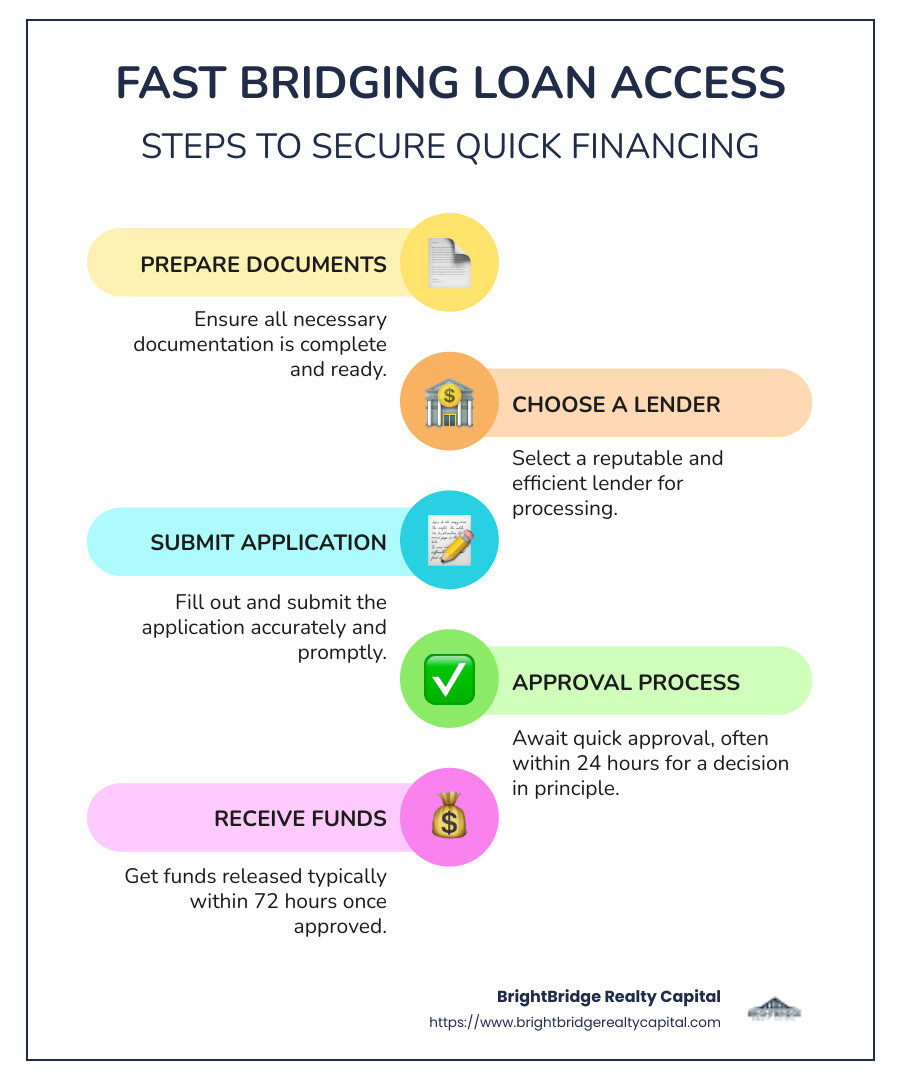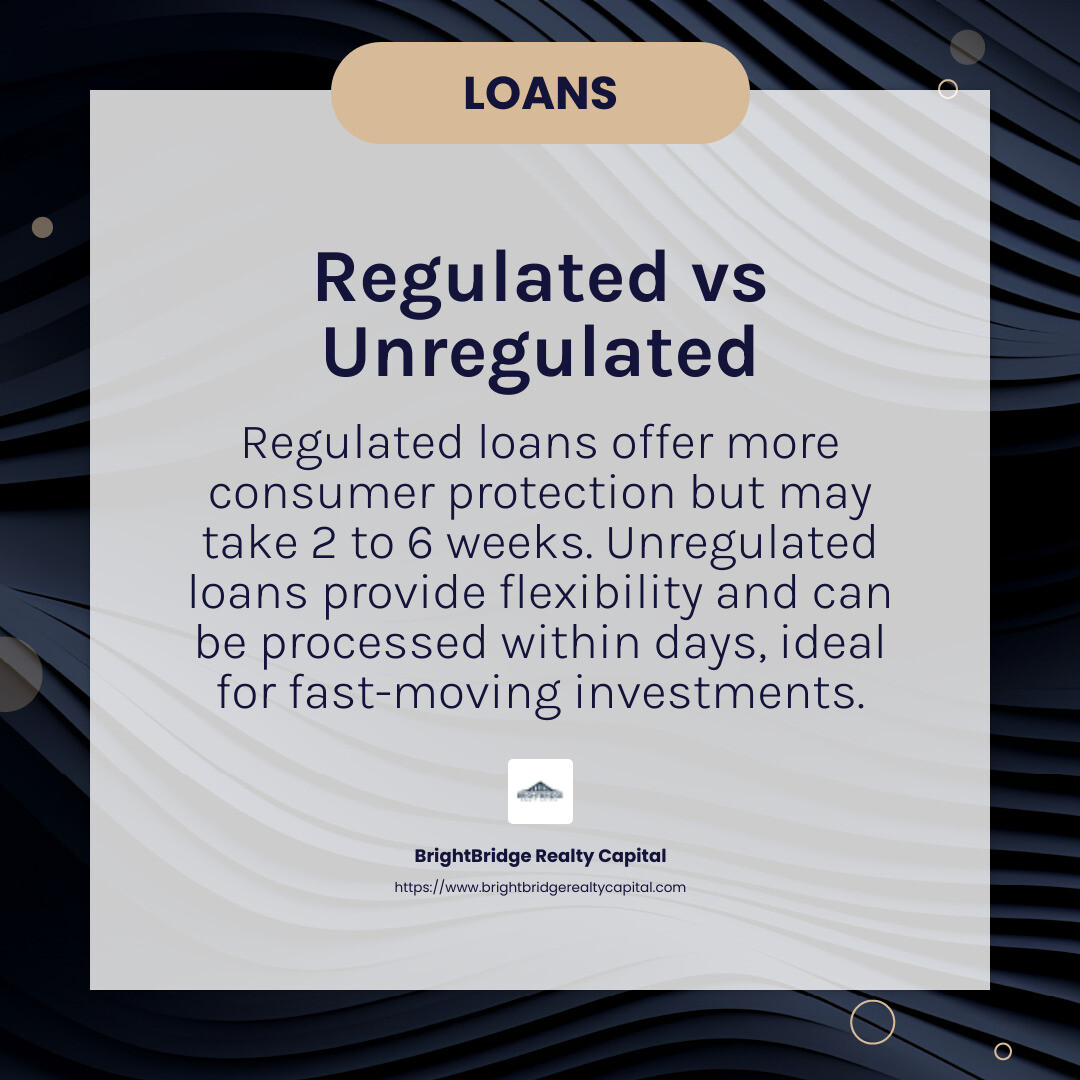Quick Cash: How Quickly Can You Obtain a Bridging Loan?

How quickly can I get a bridging loan? If you're looking for quick access to funds, bridging loans might be your answer. Designed as short-term financing solutions, these loans are ideal for real estate investors who need to act fast on opportunities. Approval and funding can happen in as little as 72 hours, but typically range from a few days to two weeks depending on the lender and your preparedness.
Fast Access: Funds can be released in as little as 72 hours.
Approval Speed: Often within a day for decision in principle.
Lender Variety: Modern providers offer quicker processes than traditional ones.
Bridging loans are essentially a stopgap—allowing flexibility for those buying new properties or expanding rental portfolios while waiting on longer-term financing. Whether seizing a competitive deal or covering temporary cash flow gaps, these loans can be incredibly useful. But act quickly and have your documents ready to ensure the fastest possible turnaround.

Understanding Bridging Loans
Bridging loans are a type of short-term finance designed to provide quick access to funds. They are typically used by property investors and businesses to "bridge the gap" between a current financial shortfall and an incoming long-term solution.
Definition and Purpose
At its core, a bridging loan is a temporary financing option. It helps borrowers manage immediate cash flow needs, especially in real estate transactions. For instance, if you're buying a new property but haven't yet sold your current one, a bridging loan can cover the gap. This type of loan ensures that you don't miss out on opportunities due to timing issues.
Short-Term Finance
Bridging loans are meant to be short-term solutions, usually lasting a few weeks to a few months. They're not designed for long-term use because of their higher interest rates compared to traditional mortgages. The goal is to provide immediate funding while you secure permanent financing or sell an asset.
Flexibility and Speed
One of the key benefits of bridging loans is their flexibility. They can be custom to fit various needs, whether you're investing in real estate or handling unexpected business expenses. The speed of approval and funding is another major advantage. As mentioned earlier, bridging loans can be approved and funded in as little as 72 hours, although typical times range from a few days to two weeks.
Bridging loans are about speed and flexibility, making them an attractive option for those who need quick financial solutions. Whether you're a real estate investor or a business owner, understanding how these loans work can help you make informed decisions when you need to act fast.
How Quickly Can I Get a Bridging Loan?
When it comes to how quickly can I get a bridging loan, the answer depends on several factors that can affect both approval and funding times. Let's break down these factors and explore ways to speed up the process.
Factors Affecting Speed
The speed at which you can obtain a bridging loan hinges on several key elements:
Documentation: Having all necessary documents ready and accurate is crucial. Missing or incorrect paperwork can cause delays. Be sure to prepare bank statements, ID documents, and any financial accounts in advance.
Valuation: If your loan is secured, the lender will need to assess the value of your property or asset. This step can take time, especially if the property is in a remote location. Some lenders have trusted panels of surveyors who can expedite this process.
Credit Assessment: Lenders will evaluate your credit history to determine risk. A complex financial background can slow down the assessment. However, lenders experienced with diverse credit profiles can often move more quickly.
Speeding Up the Process
To ensure a fast approval and funding process, consider these strategies:
Correct Application: Double-check that your application is complete and accurate. This reduces the chances of back-and-forth communication, which can slow things down.
Exit Strategy: A well-defined exit strategy is vital. Lenders want assurance that the loan will be repaid promptly. This clarity can speed up their decision-making process.
Good Communication: Maintain open lines of communication with your lender. Promptly reply to any queries and keep the dialogue active to resolve potential issues quickly.
Choose the Right Lender: Opt for a lender known for quick processing times. Some lenders can approve and fund loans within days, while others may take weeks. Hard money lenders, for instance, often provide faster approvals than conventional banks.
By focusing on these areas, you can significantly reduce the time it takes to secure a bridging loan and access the funds you need without unnecessary delays.
Types of Bridging Loans
Understanding the types of bridging loans is essential for choosing the right one for your needs. These loans can be categorized into two main types: regulated vs. unregulated, and residential vs. commercial.
Regulated vs. Unregulated Bridging Loans
Regulated Bridging Loans are governed by strict rules and regulations. They are typically used for residential properties where the borrower or their family will live. Since these loans are regulated by financial authorities, they offer more consumer protection. However, the additional compliance and bureaucracy can slow down the process, often taking 2 to 6 weeks to complete.
Unregulated Bridging Loans, on the other hand, are more flexible and less restricted. These are commonly used for commercial properties or property investments. Because they are not bound by the same regulatory requirements, they can often be processed more quickly—sometimes within just a few days. This makes them an attractive option for property developers or investors who need to act fast.

Residential vs. Commercial Bridging Loans
Residential Bridging Loans are used for buying or renovating homes. They are ideal for homeowners looking to purchase a new residence before selling their current one. These loans can also be used for short-term financing needs, like avoiding a property chain break.
Commercial Bridging Loans are custom for businesses and investors. They can be used for buying commercial properties, refurbishing investment properties, or even funding new developments. These loans are usually unregulated, allowing for quicker access to funds, which is crucial in the world of property investment.
In summary, the type of bridging loan you choose will depend on your specific situation and needs. If you require a regulated loan for a residential purchase, be prepared for a longer process. If speed is your priority, and your project is commercial, an unregulated loan might be the better choice.
The Bridging Loan Process
Steps to Obtain a Bridging Loan
Getting a bridging loan can be a swift process, especially when you know what to expect and prepare accordingly. Here's a breakdown of the steps involved:
1. Loan Enquiry
The first step is to make a loan enquiry with your chosen lender. At BrightBridge Realty Capital, you can expect a quick response. Once you provide details about your needs and the property involved, the lender will assess your initial eligibility.
2. Indicative Terms
After the initial enquiry, the lender issues indicative terms. These are preliminary terms that outline the potential loan offer, subject to further checks. At BrightBridge, you might receive these terms within hours, giving you a clear picture of what's possible.
3. Decision in Principle (DIP)
Next is the decision in principle. This is a more formal step where the lender indicates their willingness to lend, subject to valuation and legal checks. It's not a final offer, but it shows you're moving in the right direction.
4. Application Process
With the DIP in hand, you'll need to submit a detailed application. This includes providing all necessary documentation, such as proof of income and property details. Having all paperwork ready can speed things up significantly.
5. Underwriting
Once your application is submitted, the underwriting phase begins. Underwriters assess your financial history, credit score, and the property's value. They determine the risk involved in lending to you. This step is crucial and can be quick if your documentation is complete and accurate.
6. Legal Checks
Legal checks are performed to ensure there are no issues with the property's title or planning permissions. This involves solicitors and can vary in time depending on the property's complexity.
By understanding these steps and preparing in advance, you can help ensure a smooth and efficient process. With BrightBridge Realty Capital's streamlined approach, you could be on your way to securing the funds you need in a matter of days.
Frequently Asked Questions about Bridging Loans
What is the typical timeframe for a bridging loan?
When it comes to how quickly can I get a bridging loan, the timeline can vary significantly. Generally, you can expect the process to take anywhere from 72 hours to two weeks. The exact timing depends on the lender and your specific circumstances. Some lenders might move faster, especially if you have all your documentation ready and the property valuation is straightforward.
What can delay a bridging loan application?
Several factors can slow down a bridging loan application. Incomplete documentation is one of the most common culprits. Make sure you have all necessary paperwork, such as proof of income and property details, ready to go.
Another potential delay is related to property valuation. If the lender requires a detailed survey, this can take time. Market conditions can also impact the speed of your application. In a hot property market, valuations might take longer due to high demand for surveyors.
How can I ensure a fast bridging loan approval?
To speed up your bridging loan approval, consider these tips:
Engage a good broker: A knowledgeable broker can help steer the lending landscape and find the best lender for your needs. They can also help ensure your application is complete and accurate, minimizing delays.
Choose a reputable lender: Opt for lenders known for their quick processing times and straightforward application processes. BrightBridge Realty Capital, for example, has a streamlined approach that can help you get your loan approved faster.
Prepare your documentation: Having all your paperwork ready and organized can prevent last-minute scrambles and speed up the process. This includes proof of income, property details, and a clear exit strategy.
By following these steps, you can help ensure a smooth and timely bridging loan application process.
Conclusion
When it comes to bridging loans, speed and efficiency are crucial. At BrightBridge Realty Capital, we pride ourselves on delivering fast closings and a seamless process for our clients. Our approach is designed to help you secure the funding you need quickly, so you can seize opportunities without delay.
We understand that in the real estate market, time is often of the essence. That's why we offer direct lending without intermediaries, which allows us to provide competitive rates and cut down on unnecessary delays. Our team is committed to managing every detail in-house, ensuring that you receive personalized support throughout the entire process.
If you're looking for a bridging loan that combines speed with flexibility, BrightBridge Realty Capital is here to help. With our expertise and dedication, you can move forward confidently, knowing that your financial needs are in capable hands.
For more information on how we can assist you with your real estate financing needs, visit BrightBridge Realty Capital.
Experience the difference with BrightBridge Realty Capital—where quick closings and seamless service are our promise to you.


